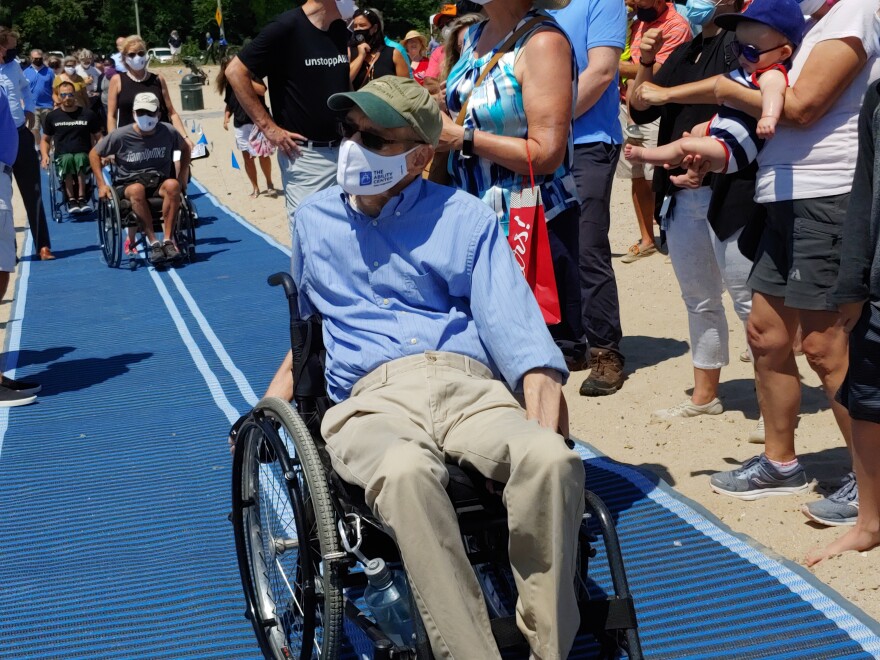Thirty years ago this summer, the landscape slowly started to change for people with disabilities in the U.S. The change in 1990 came through the passage of major legislation known as The Americans With Disabilities Act, or ADA.
The federal Centers for Disease Control and Prevention says one in four adults in this country has some type of disability. Those include people with vision or hearing impairment, loss of movement, mental health concerns, speech and memory loss.
The ADA law helped people like Tim Ochnikowski, who has used a wheelchair for four decades. Ochniknowski worked with others who needed help and became the director of the Milwaukee County Office For Persons With Disabilities.

He's newly retired from the job. Looking back for WUWM’s Lake Effect, Ochnikowski says he's proud that accessibility has improved at locations like the UW-Milwaukee campus, downtown Milwaukee, and Bradford Beach, where a ramp and plastic mat were recently added to help people in wheelchairs reach the shoreline.
Looking ahead, Ochnikowski says the county and various nonprofits have other improvements in mind.
"You never stop improving. The [ADA] law didn't require everything to be fixed at one time. It would be impossible, and that's why the ADA was designed — to keep making things better," he says.
Support for Innovation reporting is provided by Dr. Lawrence and Mrs. Hannah Goodman.

Do you have a question about innovation in Wisconsin that you'd like WUWM's Chuck Quirmbach to explore? Submit it below.
_






